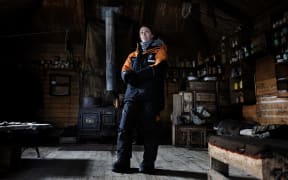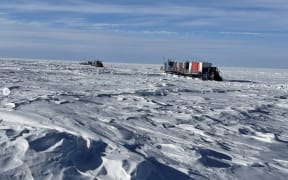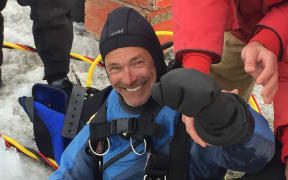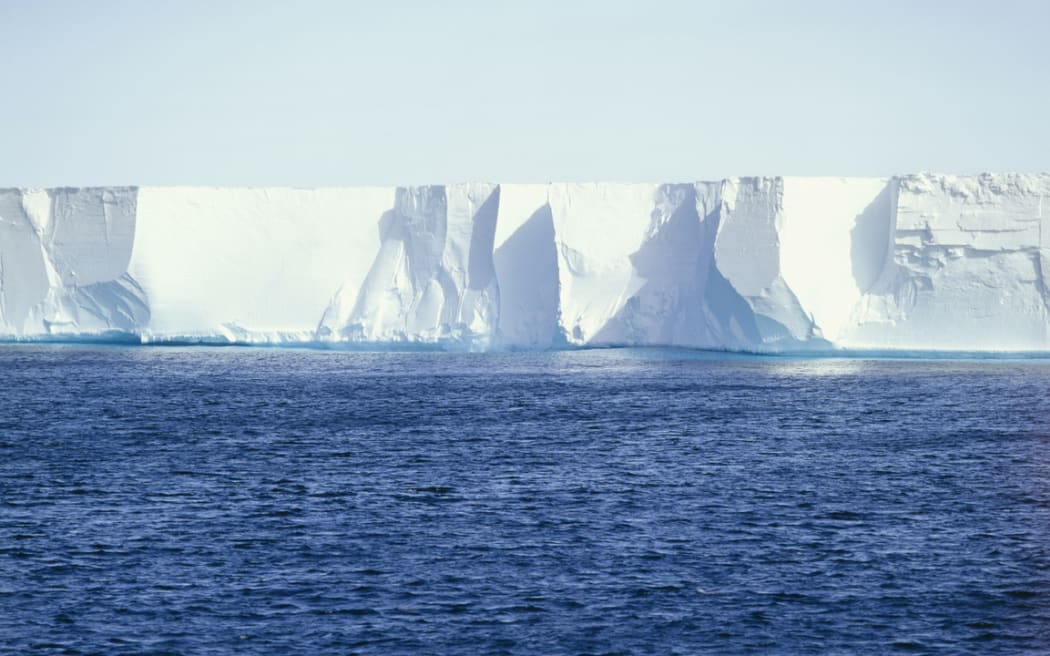
The Ross Ice Shelf. Photo: Supplied / Science Media Centre
New Zealand scientists are planning to drill nearly a kilometre through Antarctic ice and into the earth below, in a bid to answer how much warming the ice sheet can withstand.
If they get past 0.6 metres into the ocean bed, they'll already have gone deeper than anyone has before - and they want to hit 160m.
There's another catch: the ocean bed sits beneath 700 metres of ice and another 40 metres of water.
The project is part of a multi-country collaboration to see how fast the ice sheet has melted in the past, and under what conditions.
GNS Science's Richard Levy said the goal was to determine how much warming the ice shelf could tolerate before it collapsed.
"It matters, of course, because as the Antarctic ice sheet starts to melt and retreat [it] drives sea level up. We're quite concerned about just how much and how fast the Antarctic ice sheet will melt, and how it will then impact sea level rise around the world.
"Figuring out what temperature we need to keep warming below in order to save the ice shelves is really what the SWAIS-2C project is about -- is it 1.C? Is it 2C? Can we push to 2.5C, and still keep those ice shelves around?

Darcy Mandeno at the control panel. Photo: GNS Science
Levy said the ice shelf in question, the Ross Ice Shelf, was the size of France and buttressed the West Antarctic ice sheet, slowing its flow into the ocean.
The sediment underneath contained a history of ice-melt going back centuries. Levy said scientists could tell when the ground had been covered with ice, and when it had been covered by ocean.
"When the climate got colder in the past, we would expect the large West Antarctic Ice Sheet to grow bigger and advance across the drill site. And it would deposit rocks that formed beneath large ice shelves [which are] very different than the ones that are forming here today."
"Now, when the climate gets warmer, or got warmer in the past, we would expect the ice shelf to perhaps collapse, and the ice sheet to retreat such that now your drill site is covered by open ocean - things like the diatoms, marine algae, and organisms that live in the ocean and die and fall to the seafloor would collect at the drill site."
The results would be "so important" for climate adaptation and mitigation.
"If we can say unequivocally, that if we can keep warming below 2C, you can save those ice shelves, then that's information that global community needs," Levy said.
"We need to know that because it puts pressure on us even more to make sure we achieve those lower temperature targets."
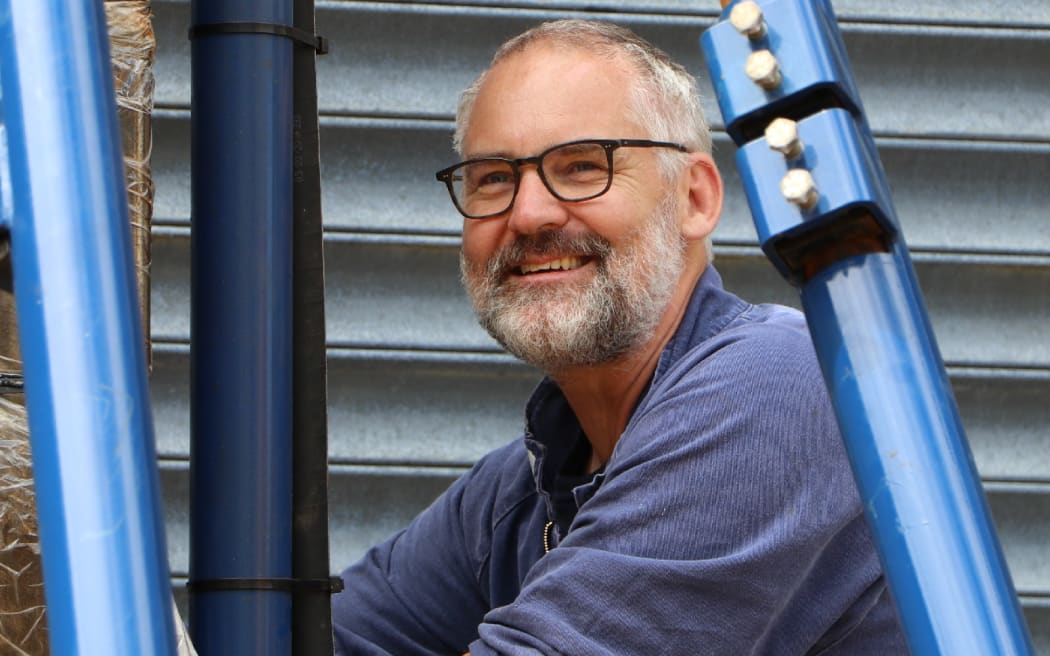
Darcy Mandeno. Photo: GNS Science
The initial piece of the core would be in New Zealand by the following February, Levy said.
"And then we'll convene the large science team, so people from all over the world will come to Dunedin, in May, June, and we'll actually cut open the core there and start to examine it in detail."
Analysis would take between six and 12 months.
"We're going to try and do this as quickly as we can, because we know we don't have a lot of time to get on top of our emissions mandate."
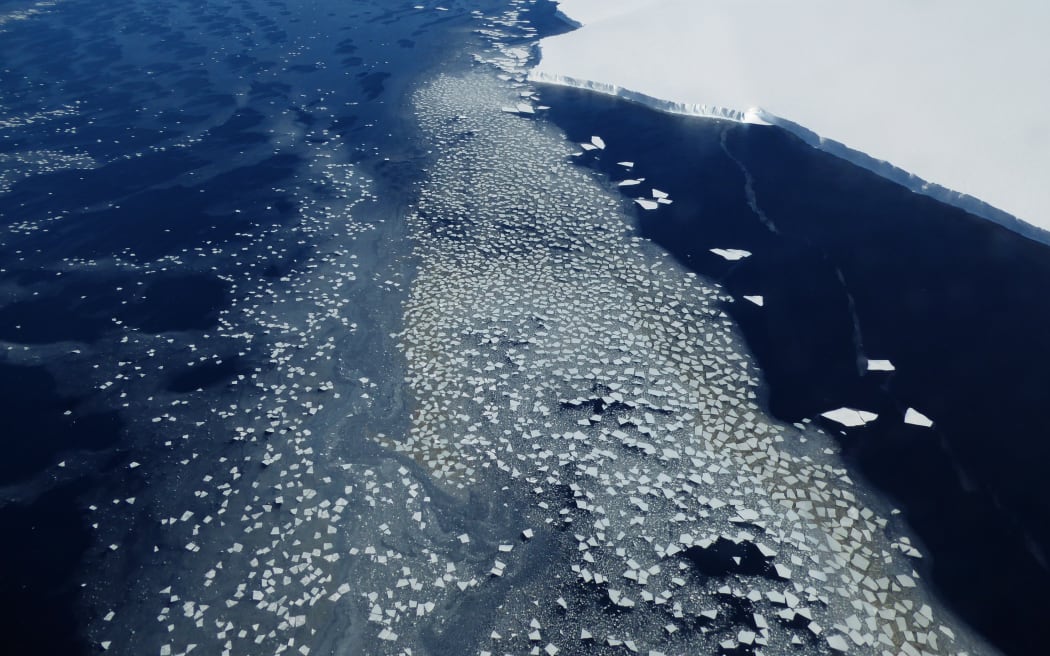
The seaward edge of the Ross Ice Shelf Edge, where thousands of small icebergs calve from the ice edge. Photo: Bethany Burton, U.S. Geological Survey. Public domain
Chief engineer Darcy Mandeno will be on the team down to the ice - his 11th trip.
The drill site sat south east of Scott base, as the crow flies about 850 to 900km, but about 1200 to 1300km to drive, he said.
The hybrid drill was custom made by Webster Drilling in Porirua. It combined a hot water drilling system to melt a hole through the ice, followed by a new sediment drilling system known as the Antarctic Intermediate Depth Drill (AIDD) to retrieve the sample by boring down into the rock layers below the seafloor.

